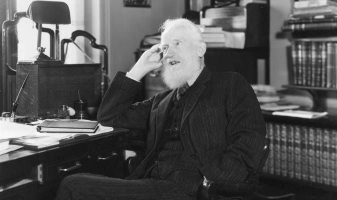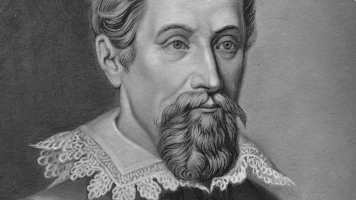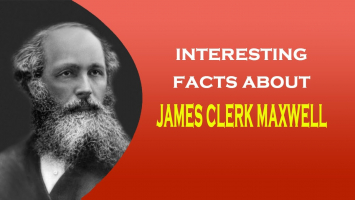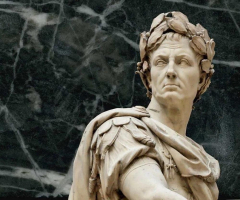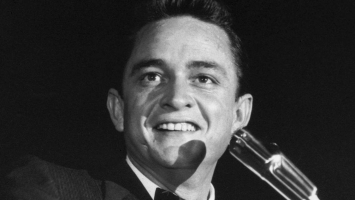Top 10 Interesting Facts about Susan B. Anthony
American women's rights advocate Susan B. Anthony dedicated her life to promoting racial, gender, and educational equality. She was a key figure in the women's ... read more...suffrage movement and one of the most well-known women in American history. The 19th Amendment, which granted women the right to vote, is named in her honor. Let’s explore the ten most interesting facts about Susan B. Anthony to gain more useful knowledge about her!
-
One of the most interesting facts about Susan B. Anthony is she was born into a family of abolitionists. On February 15, 1820, Susan Brownell Anthony was born into a Quaker family in Adams, Massachusetts. Her family was made up entirely of activists, and she was the second of seven children. The parents of Susan B. Anthony instilled in her and her six siblings a commitment to social justice causes such as abolition of slavery and jail reform.
Their farm ultimately hosted anti-slavery gatherings every Sunday, and her father made friends with well-known abolitionists. Daniel Anthony, Susan's father, frequently brought reformist figures to their Rochester, New York, home, including Wendell Phillips, a supporter of Native Americans, and Frederick Douglass, the father of the abolitionist movement. The adults would talk about social reform, politics, and advocacy. When Susan was a little child, she watched from the sidelines while learning. Her beliefs on equality were influenced by these events, and some of her first activist efforts supported the abolitionist cause.
Susan's early attitudes about women and their potential were greatly influenced by the Quaker customs and principles of the Anthony family. Since its origin, Quakerism has allowed women who sense a call from God to serve as ministers and deliver sermons to their congregation and neighborhood. Many Quaker women even went on to become traveling ministers, traveling the nation and the world to spread their philosophy. These early role models may have had a big impact on Susan. Susan relentlessly campaigned for women's suffrage for several decades, speaking to anybody who would listen throughout the United States.
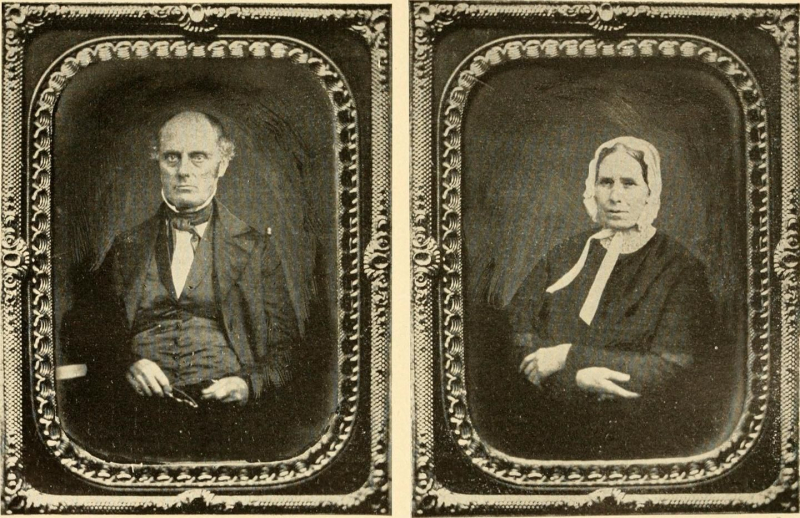
Photo: https://www.sutori.com/ 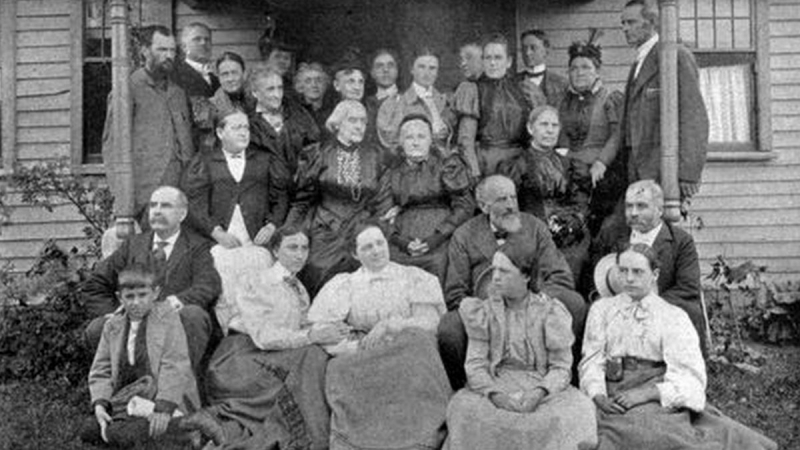
Photo: https://www.iberkshires.com/ -
Anthony was a schoolteacher in Canajoharie, in the Mohawk Valley, at the time of the first women's rights convention in Seneca Falls, as Elizabeth Cady Stanton recalled in her memoir "History of Woman Suffrage." According to Stanton, Anthony was "startled and amused" when she learned about the events and "laughed heartily at the novelty and arrogance of the demand." After the Seneca Falls meeting, the Anthony family started attending services at the First Unitarian Church in Rochester where a woman's rights meeting was held. Susan lived there for many years as an adult with Anthony's sister Mary. They put their signatures on a copy of the Seneca Falls Declaration of Sentiments there. Susan didn't attend and wasn't there.
It took Anthony till she was in her 30s before she went to her first conference for women's rights. Before that, she participated actively in the temperance movement, which pushed for stricter alcohol regulations and warned against binge drinking. When she was refused permission to speak at a Sons of Temperance convention a few years after giving her first public speech, she and Stanton decided to found their own Women's State Temperance Society. They started a petition to convince the state legislature to restrict the sale of alcohol, but it was withdrawn because the majority of signers were women and children. Around this time, Anthony and Stanton began to realize that until women were granted the ability to vote, they would never be taken seriously.
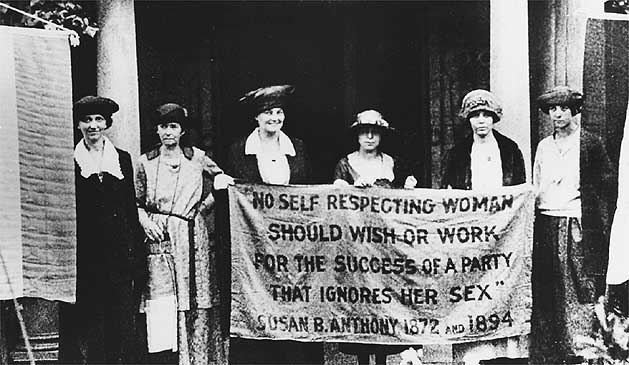
Photo: https://www.coveyclub.com/ 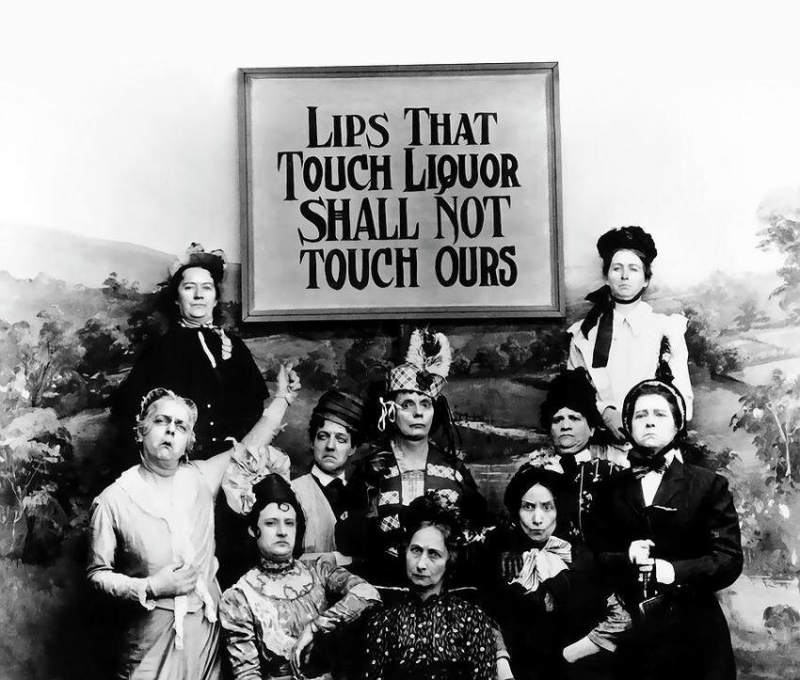
Photo: https://www.pompandwhimsy.com/ -
In the presidential election of 1872, which pitted Horace Greeley against the incumbent, Ulysses S. Grant, Anthony, and 15 other women turned up to cast their ballots. They participated in the New Departure campaign of the women's suffrage movement by registering to vote at a neighborhood barbershop.
Given that women were not allowed to vote at the time, this was both a symbolic act and civil disobedience. (However, Anthony voted in favor of President Grant.) Anthony begged to be "arrested properly"—that is, in the same manner, a man would be—when she was subsequently kindly asked to go to the station to face arrest by a police officer. Although this motion was granted, her trial was not entirely impartial. She wasn't allowed to give a testimony, and the judge told the jury to convict her.
In the end, Anthony was given a $100 fine, which she refused to pay. She was dubbed obstinate by some and resilient by others. Susan started personally pleading with Congress every year to grant women the right to vote in 1860. She traveled to Congress in 1877 with a petition bearing the signatures of over 10,000 Americans, but on the floor of the chamber, she was essentially laughed at. She persisted in making this appeal until 1906, the year of her death, despite widespread mockery from many. Even though she had a significant impact on the suffrage movement, she was never able to exercise her right to vote. Thirteen years after her passing, the 19th Amendment became law.
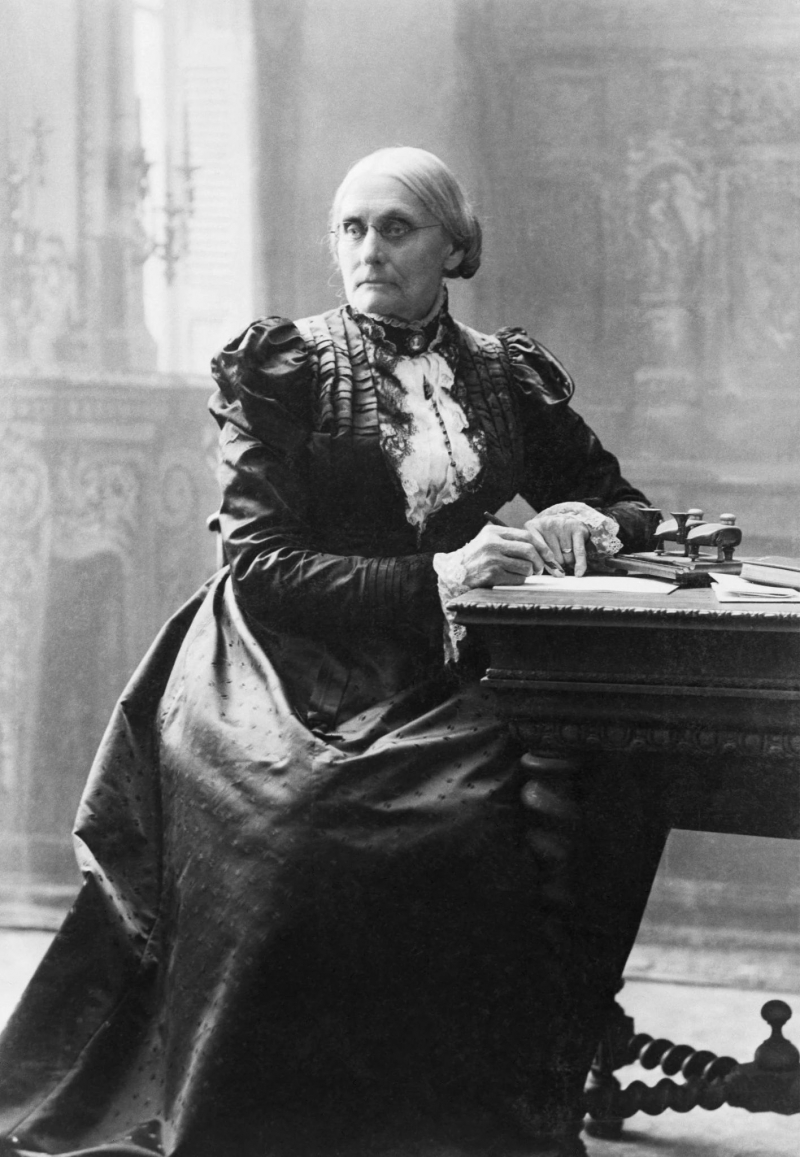
Photo: https://www.smithsonianmag.com/ 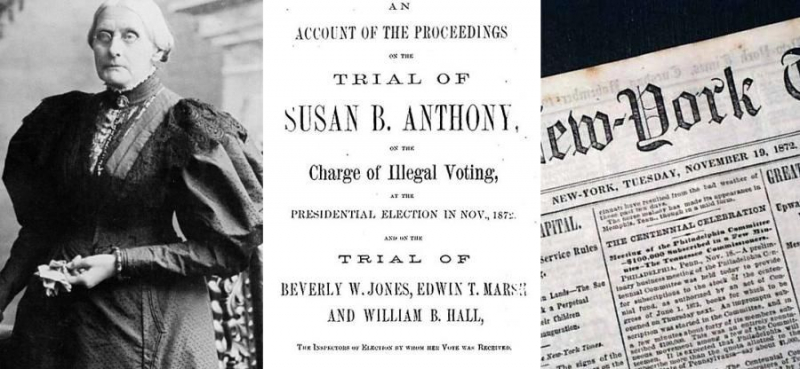
Photo: https://thewomenssuffragemovement.wordpress.com/ -
Susan B. Anthony was a Quaker at first and then grew more involved with the Unitarians despite having a maternal grandfather who had been a Universalist. Like many others of her era, she dabbled with Spiritualism, the notion that spirits were a component of the natural world and could thus be interacted with. Although she advocated the publication of "The Woman's Bible" and condemned religious organizations and doctrines that represented women as inferior or subordinate, she largely kept her religious beliefs a secret.
Her criticism of religious organizations and how religion is conducted is typically the basis for assertions that she was an atheist. Susan B. Anthony fought for Ernestine Rose's ability to lead the National Women's Rights Convention in 1854, even though many people incorrectly referred to Rose, a Jew who was married to a Christian, as an atheist. Regarding that debate, Anthony stated, "Every religion, or none at all, should have an equal right on the platform." “I distrust those people who know so well what God wants them to do because I notice it always coincides with their desires,” she added in another letter. At another time, she wrote, “I shall earnestly and persistently continue to urge all women to the practical recognition of the old Revolutionary maxim. Resistance to tyranny is obedience to God.”
It's unclear if she was an atheist or simply had a different conception of God than some of her evangelical opponents.
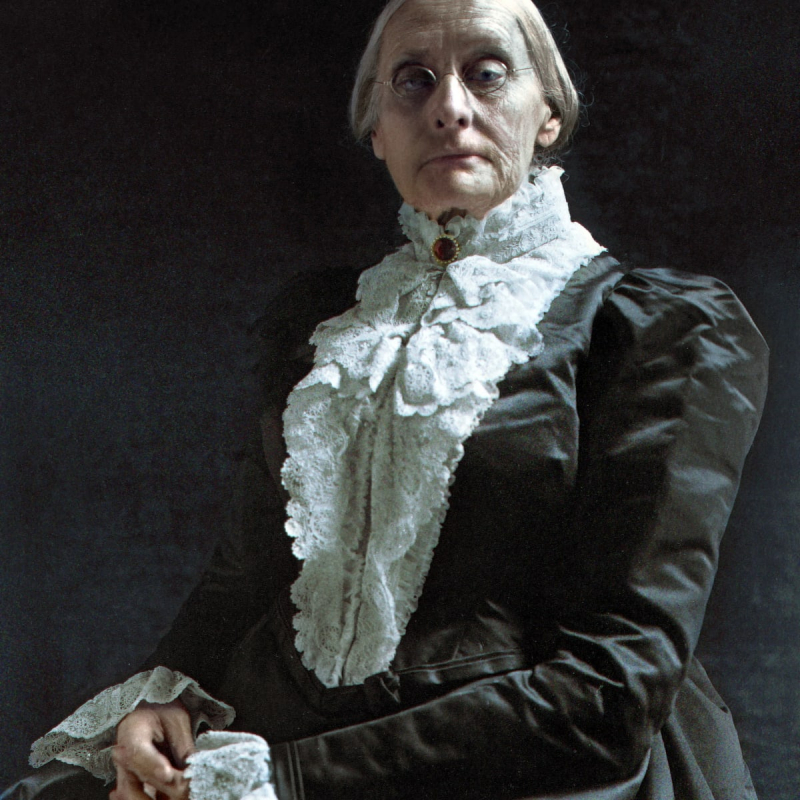
Photo: https://www.history.com/ 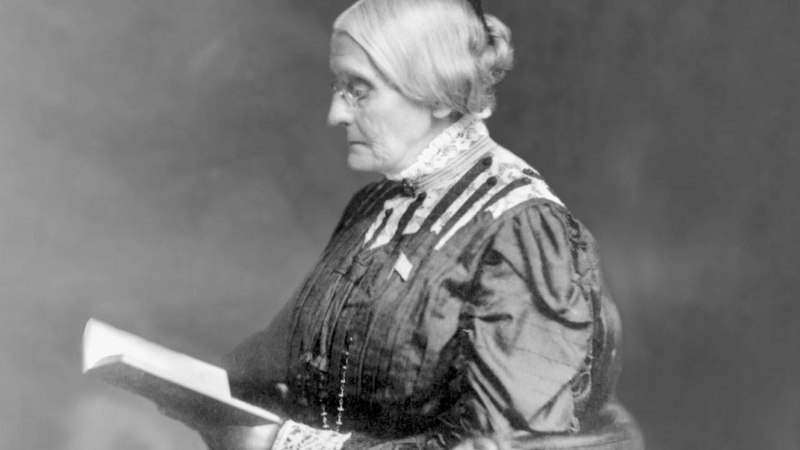
Photo: https://www.wmht.org/ -
The Susan B. Anthony Dollar Coin Act, which replaced the current dollar coin with one featuring Anthony's likeness, was signed into law by President Jimmy Carter in 1978. The 1979 dollar showing Susan B. Anthony was the first time an actual, historical woman featured on any U.S. currency, despite other female icons like Lady Liberty having previously graced the currency. This is one of the most interesting facts about Susan B. Anthony. Only from 1979 to 1981 were these dollars produced before production was stopped because they were frequently mistaken for quarters. To satisfy the vending machine industry's demand, the coin was produced once more in 1999. The coin wasn't extensively used because it resembled a quarter a little too much and didn't have a special place in cash registers. Sacagawea on the dollar coin and Helen Keller on a limited-edition quarter in Alabama are two well-known American women who featured on coinage after Anthony.
However, Anthony might be given another chance when she appears on the $10 bill's new reverse. (At this time, it's unclear when the to revamp, which was announced in 2016, will happen.) Stanton, Lucretia Mott, Sojourner Truth, and Alice Paul are some more significant women who are anticipated to be included in the redesigned $10.
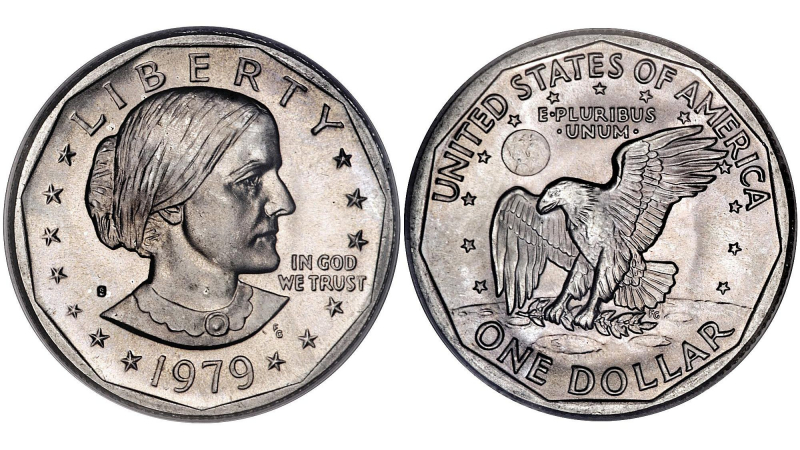
Photo: https://www.thesprucecrafts.com/ 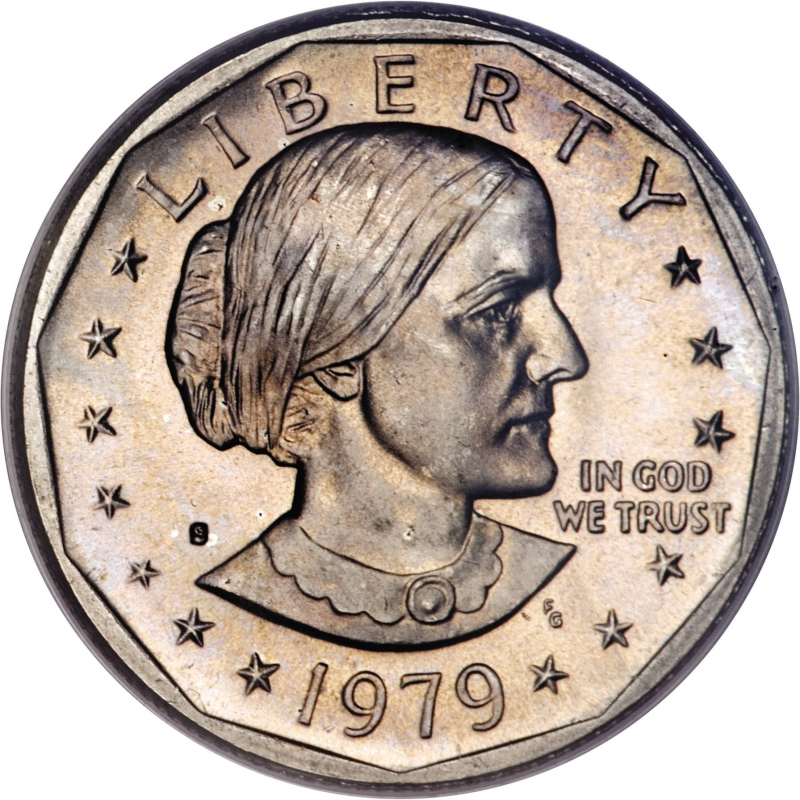
Photo: https://www.foreigncurrencyandcoin.com/ -
In 1851, Anthony and Elizabeth Cady Stanton were met by a mutual friend, Amelia Bloomer. One could argue that they became buddies right away. Stanton subsequently reflected on her first feelings for Anthony, stating, "I liked her totally, and I do not know why I did not immediately bring her home with me to dinner." They were close collaborators with similar viewpoints in addition to being friends. The two became unstoppable forces for women's rights and developed a close, sincere friendship. Elizabeth was the creative force, while Susan oversaw business. Together, they would eventually form the National Woman Suffrage Association and launch The Revolution, a publication dedicated to women's rights. For the remainder of their lives, they remained best friends as well as allies.
In 1851, Susan and Elizabeth Cady Stanton first crossed paths at a Syracuse, New York, anti-slavery conference. At the time, both women were in their thirties. Despite the stark differences in their personal lives, they managed to make the most of them. Anthony was free to travel the nation speaking at rallies and doing speaking engagements despite never getting married or having kids. Elizabeth wrote from home to have an impact on the campaign because she was married to abolitionist Henry B. Stanton and had a family to care for.
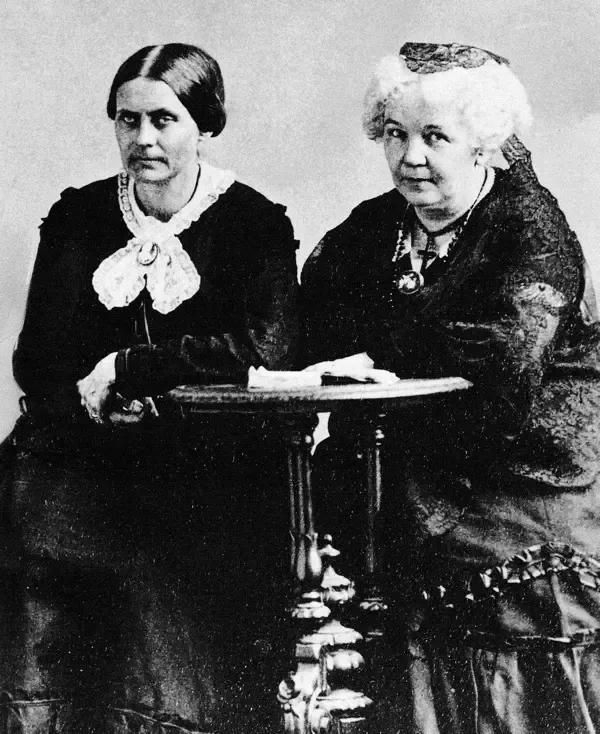
Photo: https://www.quora.com/ 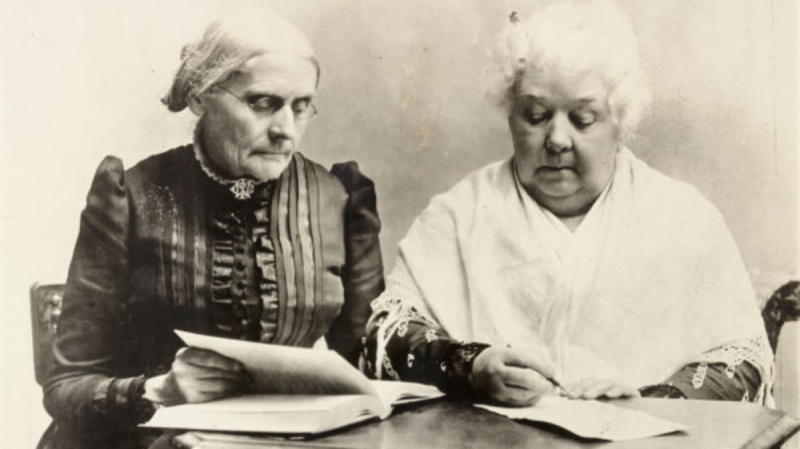
Photo: https://www.history.com/ -
Susan B. Anthony and Frederick Douglass were longtime friends, even though they disagreed on the importance of Black male suffrage in the 1860s, which led to a rift in the feminist movement that lasted until 1890. They had been acquainted since their early years in Rochester, where he had been a member of the same anti-slavery group as Susan and her family during the 1840s and 1850s. He had been sitting next to Anthony on the platform of a Washington, D.C., conference for women's rights on the day that Douglass passed away.
Douglass made an effort to persuade Anthony to vote in favor of ratification during the debate over the 15th Amendment's provision allowing Black men the right to vote. Anthony, who was angry that the proposed 14th Amendment would offer Black males citizenship while completely ignoring the rights of women, vowed that he would "chop off this right arm of mine before I ever work for or demand the ballot for the Negro and not for the woman." She hoped that women would be able to vote, and then the 15th amendment was passed, granting voting rights to Black men. Again, no women. Despite being sympathetic to Anthony's cause, Douglass had a different viewpoint on the conflict.
Douglass once said, "Women will only stand up for themselves when they are hunted down through the streets of New York and New Orleans simply because they are women; when they are dragged from their homes and hung on lampposts; when their children are torn from their arms and their brains dashed out on the pavement; when they are objects of insult and outrage at every turn; when they are in danger of having their homes burned down over their heads; when their children are not permitted to attend schools."
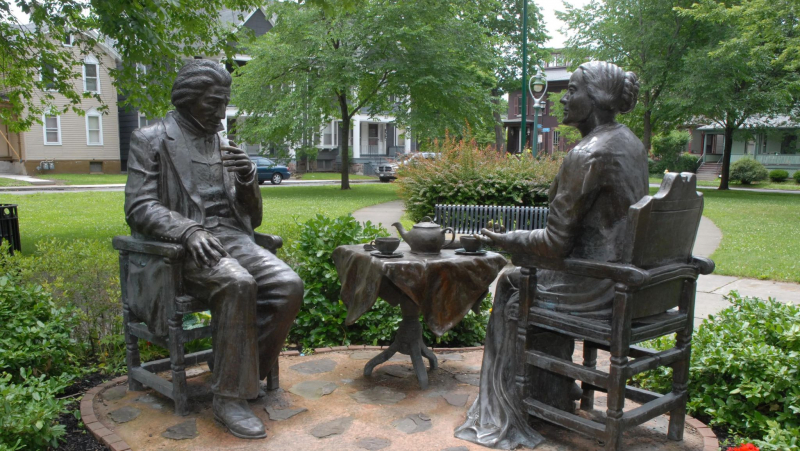
Photo: https://www.democratandchronicle.com/ 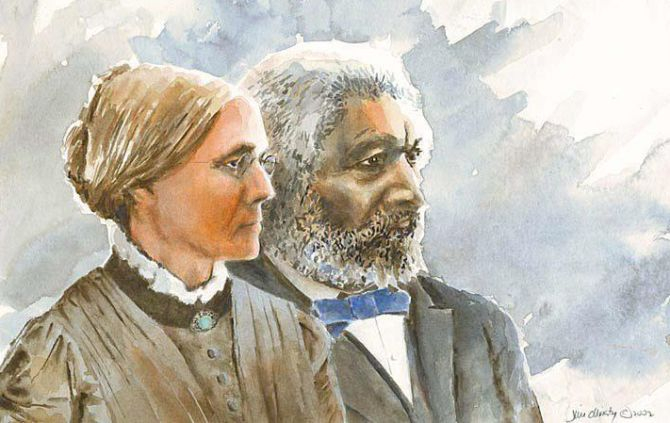
Photo: https://www.pinterest.com/ -
A ship was given Susan B. Anthony's name in 1942, which is one of the most interesting facts about Susan B. Anthony. The ship, which was built in 1930 and was known as the Santa Clara until the Navy rented it on August 7, 1942, became one of the very few to be named for a woman. After being given its official commission in September, it was used as a transport ship for personnel and supplies during the Allied invasion of North Africa in October and November. It traveled to North Africa three times from the American coast.
As part of the Allied invasion of Sicily in July 1943, after landing troops and equipment there, it came under severe enemy aircraft fire and bombs; yet, it managed to shoot down two of the enemy planes. After returning to the US, it took months to transport personnel and supplies to Europe to set up the Normandy invasion. It hit a mine on June 7, 1944, off the coast of Normandy. The troops and crew were evacuated and Susan B. Anthony sank following unsuccessful attempts to salvage it.
This was the largest ship rescue without a fatality that has ever taken place as of the year 2015.
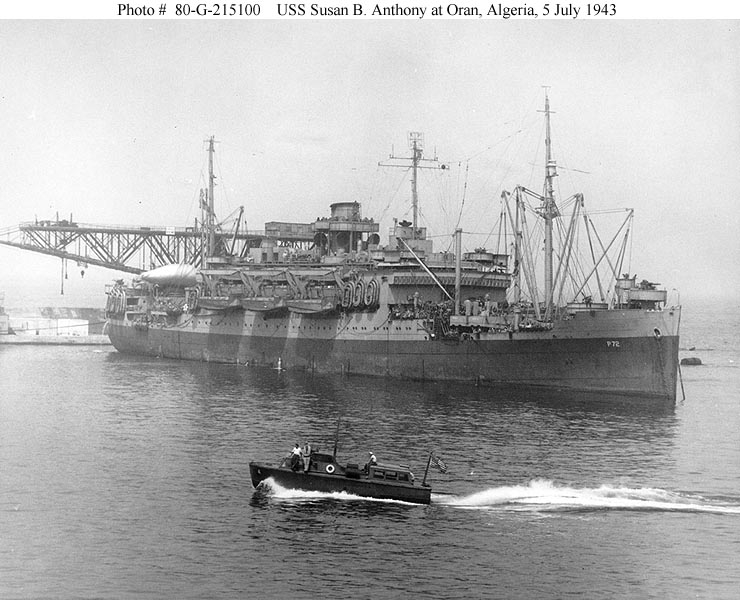
Photo: https://en.wikipedia.org/ 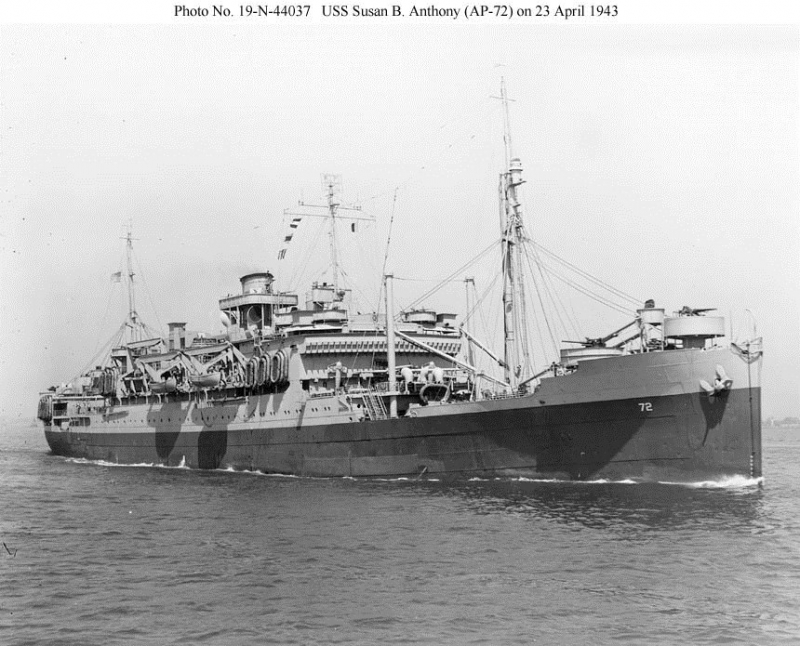
Photo: https://www.shipwreckworld.com/ -
Anthony grew up in an era before the term "lesbian" had taken off. Whether the "romantic friendships" and "Boston marriages" of the era would have been seen as lesbian relationships today is difficult to distinguish. Anthony spent a significant portion of her adult life with her sister Mary. It's difficult to tell what Susan B. Anthony meant when she wrote in a letter that she "will go to Chicago and visit my new lover, lovely Mrs. Gross," because women (and men) wrote in more romantic terms about friendships than we do today.
Anthony had close emotional connections with a few other women. Anthony also expressed her displeasure when other feminists got married to men or had children and wrote in highly flirty ways, including requests to share her bed, as Lillian Falderman demonstrates in the contentious "To Believe in Women."
Such partnerships were nothing new to her; in fact, her niece Lucy Anthony was married to Methodist clergyman and suffragist Anna Howard Shaw. Faderman hypothesizes that Susan B. Anthony may have dated Rachel Avery, Emily Gross, and Anna Dickinson at various points in her life. Emily Gross and Anthony are depicted in pictures together, and a statue of them was even made in 1896. Her relationships with women, however, never had the stability of a "Boston marriage," in contrast to others in her society. Her relationships with her female pals were deep. Even though those letters are not as flirty, she also had some genuine friendships with guys.
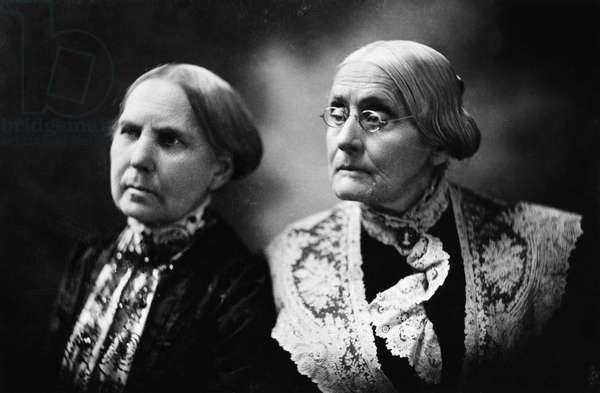
Photo: https://www.bridgemanimages.com/ 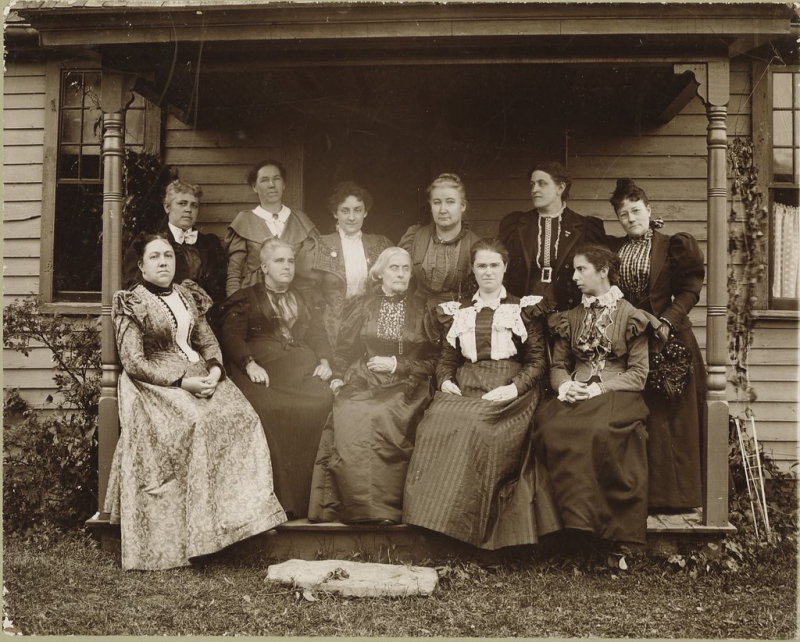
Photo: https://www.flickr.com/ -
The first recorded public birthday party for Anthony took place in New York City the same year that she was chosen for inclusion in the anthology "Eminent Women of the Age." She reflected on many years of conflict at the age of 50. In her journal, she wrote, "Fiftieth birthday!" Oh, what a struggle it was to achieve temperance, independence, and enfranchisement throughout a half-century!
Twenty years later, Anthony's allies in the suffrage and abolition movements planned a considerably larger birthday party for him. She was happy that the celebration in her honor, which took place in Washington, was also preceded by the National American Women's Suffrage Association, which was formed when the National Woman's Suffrage Association and the American Women's Suffrage Association, the two major women's suffrage organizations, merged. From that point on, a birthday celebration for Anthony was a yearly tradition at the N.A.W.S.A. conventions held in February.
Anthony resigned from her position as president of the N.A.W.S.A., which she had held for eight years, on the occasion of her 80th birthday in 1900. There were multiple birthday festivities planned for her at the organization's 1900 convention in Washington. Her portrait was added to that of other notable Americans in the Corcoran Gallery of Art.
Anthony was honored at the Lafayette Opera House with a program that featured poetry, music, gifts, and greetings from many women's organizations, including Coralie Franklin Cook of the Colored Women's Association, who said of her: "Our children, and our children's children, will be taught to honor her memory, for they shall be told that she has always been in the vanguard of the immortal few who have stood for the great principle of human rights."
She gave her final public speech at her 86th birthday party, which the N.A.W.S.A. sponsored in 1906, just before she passed away. She acknowledged the efforts of many who had given their lives to the battle for women's suffrage and anticipated its unavoidable success. Failure is unthinkable with such ladies dedicating their lives to the cause, she claimed. "There have been others just as true and devoted to the cause - I wish I could name everyone."
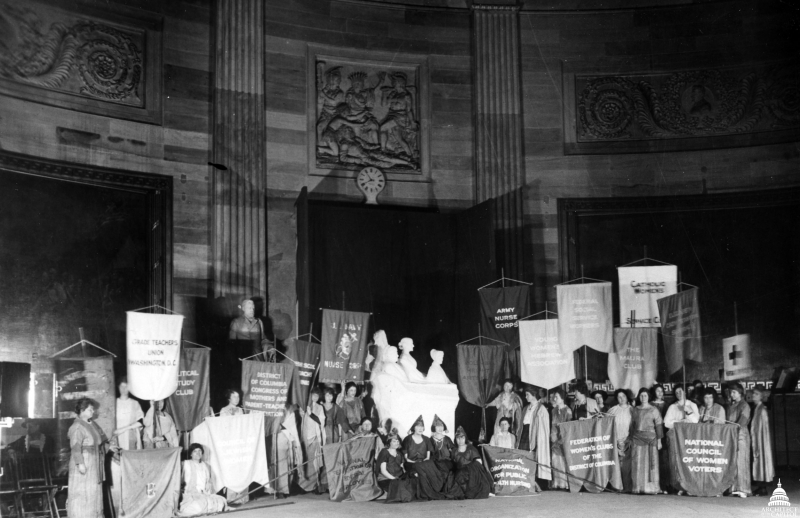
Photo: https://brewminate.com/ 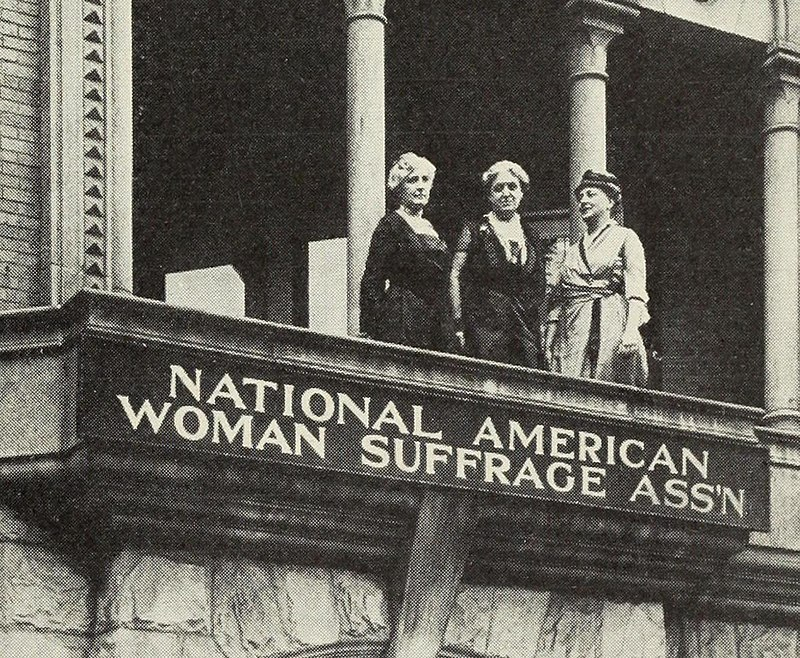
Photo: https://en.wikipedia.org/

























